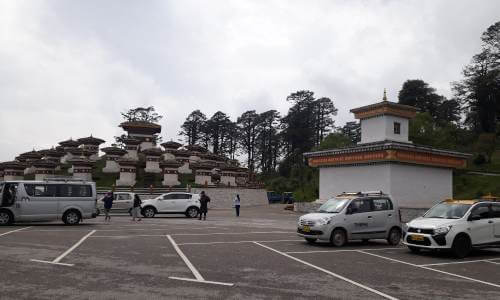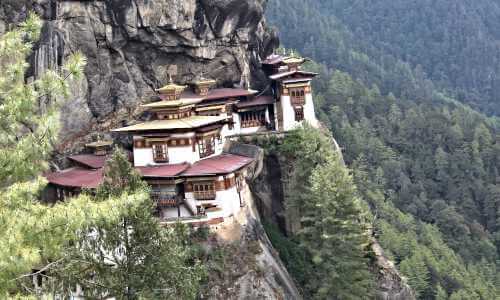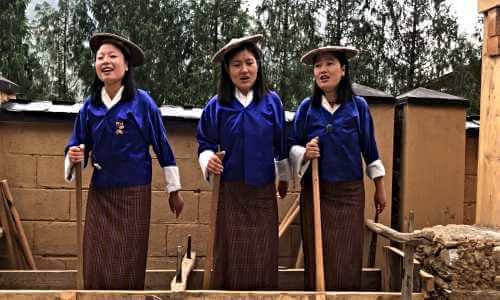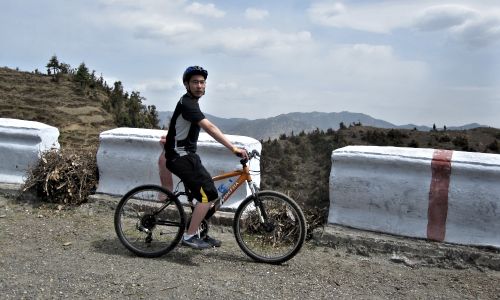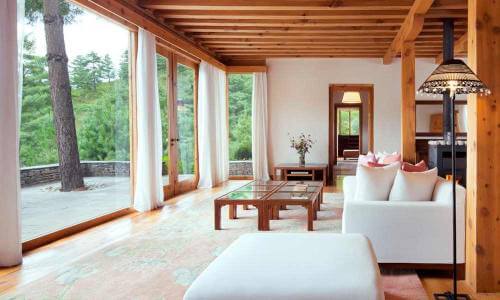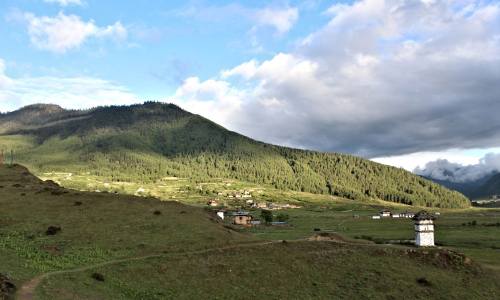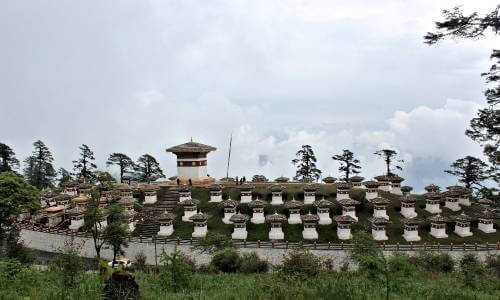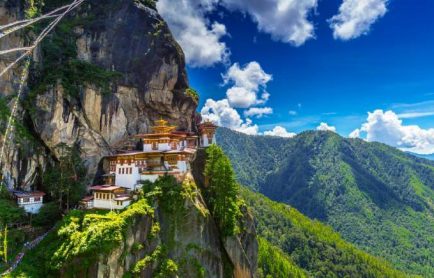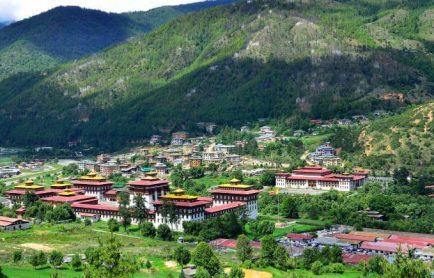Kurjey Lhakhang
One of the most sacred Buddhist pilgrimage sites, Kurjey Lhakhang, also known as the Kurjey Monastery Complex, sits in the pristine valley of Bumthang in Bhutan. Nestled on the side of a hill, surrounded by 108 chorten walls, the complex houses three revered temples namely, Guru Lhakhang, Sampa Lhundrup Lhakhang and Ka Gon Phor Sum Lhakhang.
Guru Lhakhang, the oldest of the three, was built in 1652 by the then Penlop of Trongsa and is considered a site of great religious significance for the local Bhutanese. According to legends, during the 8th century when the king of Bumthang, Sindhu Raja, fell terribly ill and was unable to be healed by any local shaman, he invited Guru Rinpoche to aid to his sickness. Coming here, Guru found the local demon, Shelging Karpo, to be the reason behind Raja’s ill health. Finding the cause, he meditated inside a cave for three months and subdued the demon after a long fight. Departing from the cave, Guru Rinpoche left his body imprints inside, thus lending the name ‘Kurjey’ meaning ‘body Imprint’ to the cave.
The temple of Guru Lhakhang today stands on the grounds of this very cave and invites myriad of Buddhist devotees from across the country. The upper floor of the temple is the main attraction and a highly revered sanctuary, housing 1000 small statues of Guru Rinpoche. Just behind a wall on the floor is the popular meditation cave which the normal public is prohibited from accessing. There is also a big cypress tree near the entrance of the temple which is believed to have sprouted from Rinpoche’s walking stick.
The second temple in the complex, which is a shrine of great religious importance, was built by the first king of Bhutan, Ugyen Wangchuk in the year 1900, when he was still serving as the Penlop of Trongsa. A ten metres colossal statue of Guru Rinpoche flanked by his eight manifestations, is by far the prime attraction here.
The third and the most recent temple in the complex was built in 1984 under the patronage of Her Majesty, the Queen Mother, Ashi Kesang Wangchuk. The 108 chortens around the whole complex were also an initiative by her along with other additions like paved temple courtyards and a large wheel of life on the compound’s porch.
A hallmark in the Buddhist history of Bhutan, Kurjey undoubtedly holds a great cultural significance too. The popular festival of Kurjey Tshechu is still celebrated every year on the complex’s grounds and provides for a magical sight of masked dance performances and Buddhist tantric rituals.
